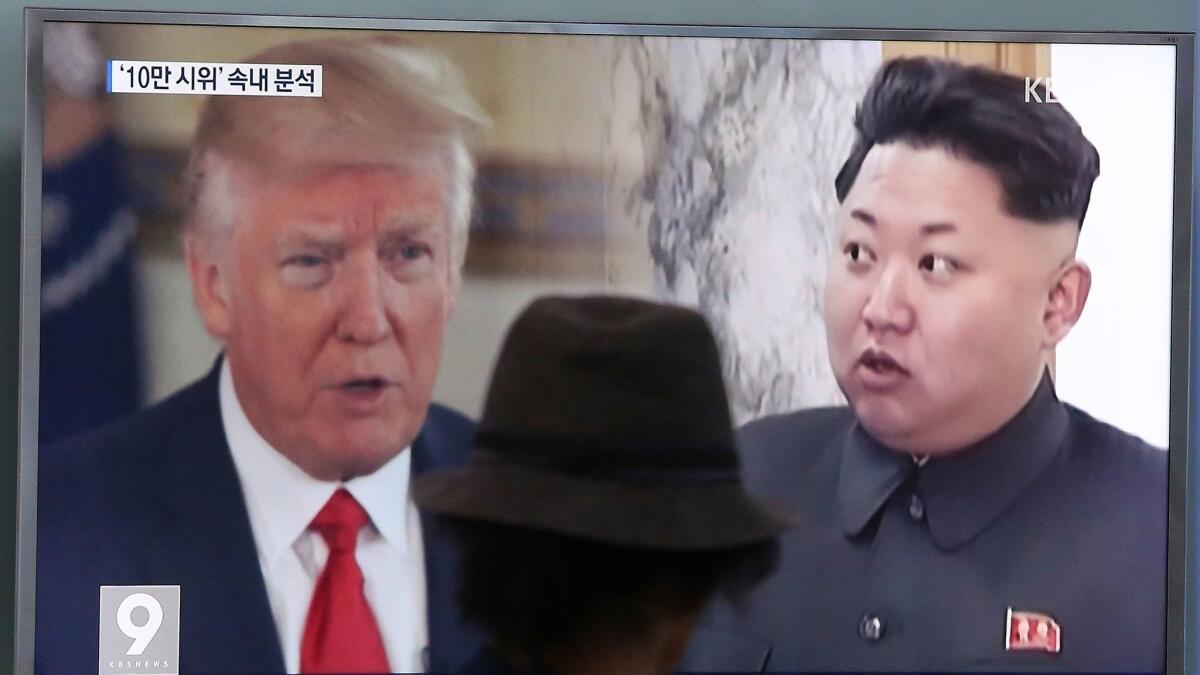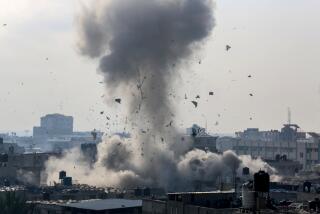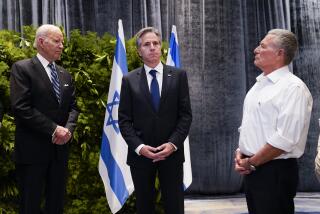Is California prepping for nuclear war? Not really, but bulletin is reminder of atomic threat

Federal and local law enforcement officials are dismissing a published report that Southern California authorities are now seriously preparing for a “nuclear exchange” between the United States and North Korea.
As the leaders of both nations escalate a tense war of words, the journal Foreign Policy published an article Wednesday reporting that “the Los Angeles-area Joint Regional Intelligence Center issued a bulletin last month warning that a nuclear attack on Southern California would be ‘catastrophic’ and urged officials in the region to shore up their nuclear attack response plans.”
Although some readers may have found the report alarming, officials are not yet clearing cobwebs off of Cold War fallout shelters.
On Tuesday, Los Angeles police Deputy Chief Horace Frank, who oversees the city’s counterterrorism efforts, said the bulletin is like many of those issued to public agencies about earthquakes and other disasters. He said it was purely a reminder for officials to be prepared for any event.
“It was generic information from public records,” Frank said.
The JRIC bulletin was an unclassified notification sent to local law enforcement on Aug. 16. The report cited North Korea’s growing ability to launch an intercontinental ballistic missile that could could reach the United States’ West Coast. It also includes information on the likely impacts of a nuclear strike on the Port of Long Beach, and warned that radioactive contamination could be spread by pets and clothing.
Federal and local officials not authorized to discuss the JRIC document told the Los Angeles Times that its contents include basic guidelines for responding to an atomic attack — information that has been available since the 1960s and that was distributed during the Cold War.
Topics include radiation, electronic magnetic pulses, the destruction of infrastructure and emergency response to a massive loss of life.
“This is a like a reminder with fundamental information and makes no assessment of the threat,” a source said. “It is designed for local government officials who don’t get classified information but provide services.”
Although the document first appeared publicly in Foreign Policy, it was widely circulated among local governments and among federal personnel, according to multiple sources. The report warns that any federal assistance could take as long as 72 hours to arrive after an attack.
Twitter: @lacrimes
More to Read
Start your day right
Sign up for Essential California for news, features and recommendations from the L.A. Times and beyond in your inbox six days a week.
You may occasionally receive promotional content from the Los Angeles Times.






